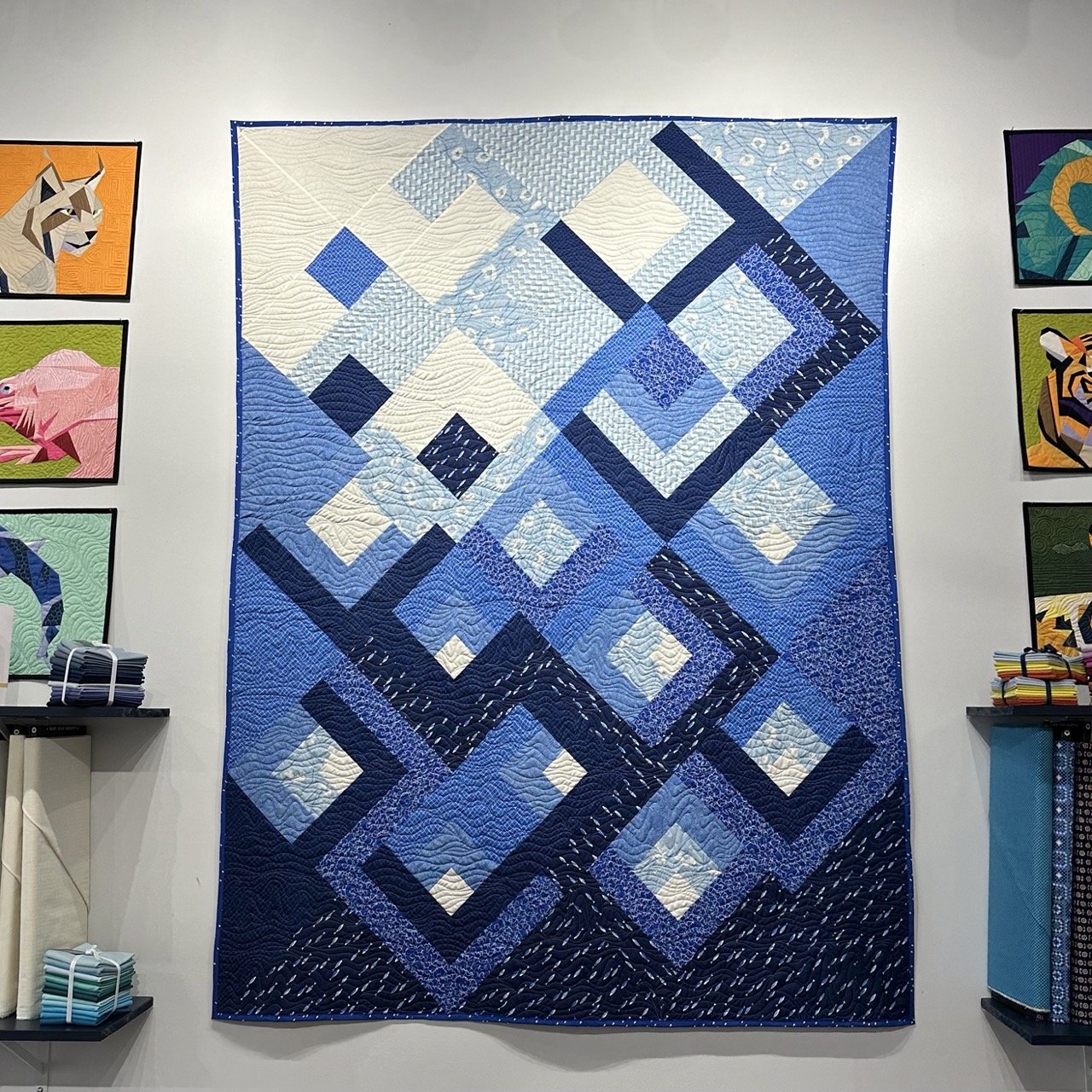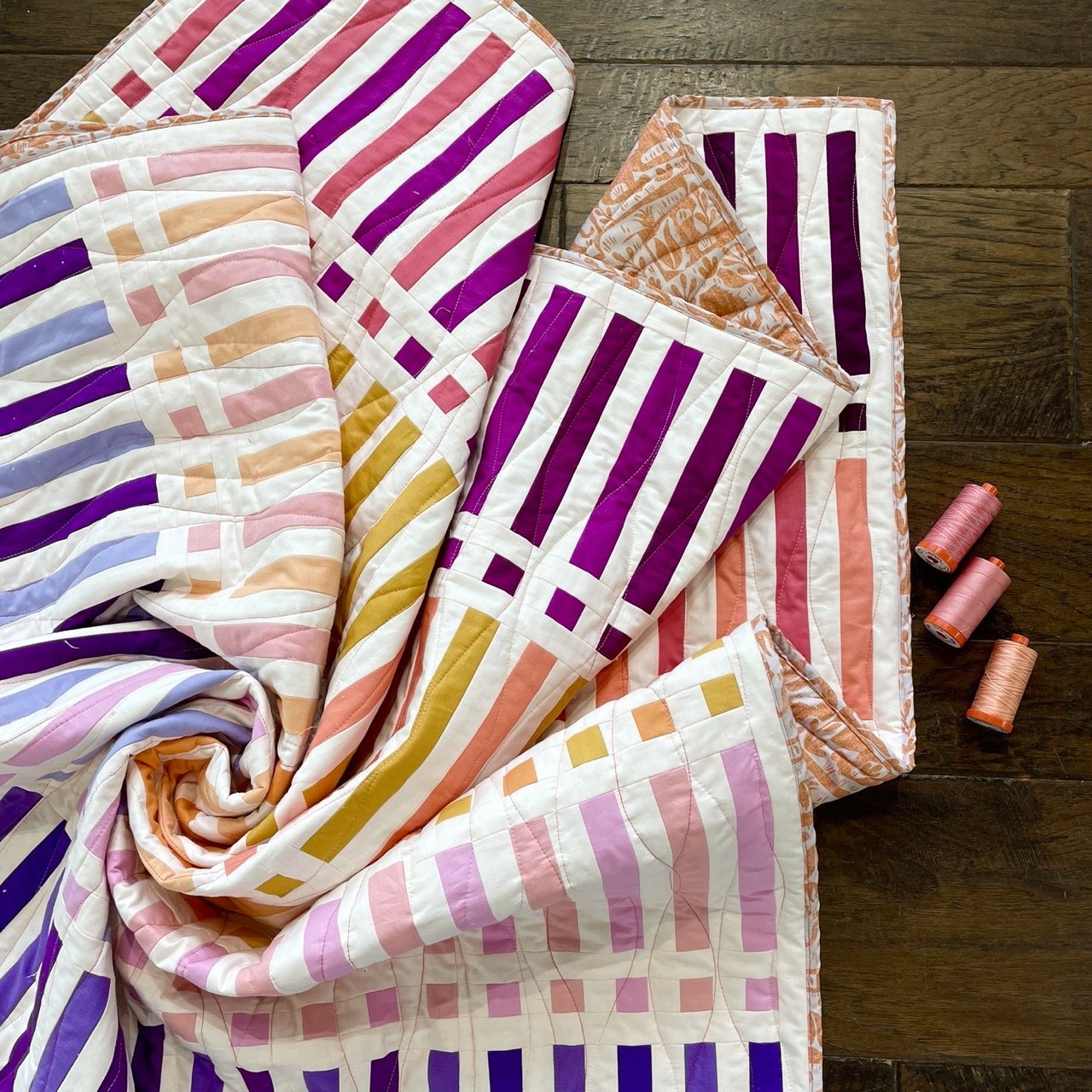Product Review: Stripology XL Ruler by Creative Grids
As much as the rotary cutter improved cutting for quilters, the Stripology rulers take fast, accurate cutting to a whole new level. Today, we’ll talk about how the Stripology XL ruler works, its pros and cons, and a few patterns that are perfect ways to practice using this amazing tool.
The Stripology ruler series, designed by Gudrun Erla, is made to lay over a piece of yardage and make it easy to cut multiple strips of fabric without moving your ruler. This allows you to cut strips and even squares faster and more accurately. I have and use the largest ruler, the Stripology XL, so that will be the focus of today’s tutorial.
Video
Key Stripology Tips
Always start at zero to square your fabric and have a clean first edge
Move the ruler and fabrics as little as possible for the most accurate cuts. Also, be sure to carefully insert your rotary blade into the slot to cut, then move with firm, even pressure for clean cuts. A table at the proper height helps a lot too
Use the markings at the bottom of the ruler (or little bits of washi tape) to quickly reference each slot for cutting without having to count and do a lot of mental math
Pros & Cons
I love the Stripology XL ruler, especially if I’m cutting a lot of strips of the same width. It’s a fast and accurate way to cut chunky bits of yardage down and get to the fun of piecing more efficiently. Especially for quilts made mostly of strips or squares, it can reduce cutting time by half easily.
As far as cons, there are two to consider: first, the Stripology XL is an investment at $74.99, and not all quilters want to or can spend that much on an extra notion. Second, like any nifty tool, it takes practice to learn to use. Expect to have to focus pretty hard the first time or two you use it until you hit your stride
Patterns to Get Started
Lanterns of Hope by String & Story: This deconstructed log cabin on point uses lots and lots of strips to build a bold modern-traditional design
Rhythm by Lo & Behold Stitchery: Multicolored strips alternate against a consistent background to create a cool color-fade design
Grid View by Zahm Co: Inspired by city blocks and streets, Grid View uses strips and squares in a transparency effect to create a fun plaid-ish design




